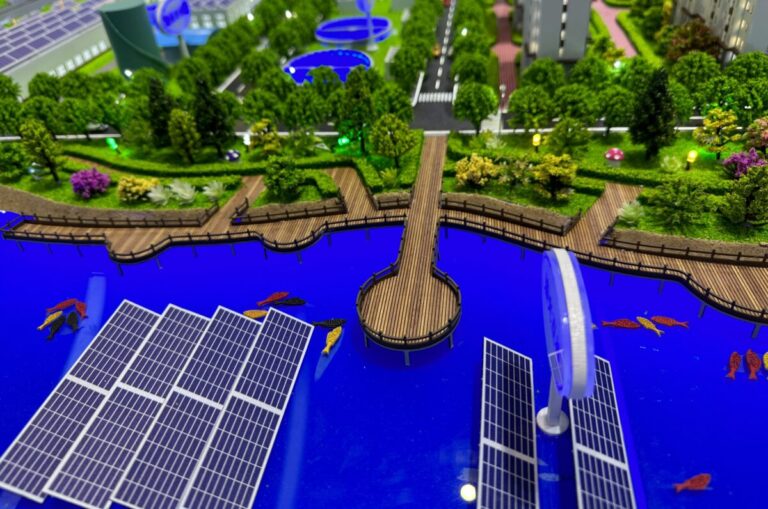Researchers in Spain have developed a new method to select those water bodies within a range of water bodies where investment in floating PV could be most beneficial. They combined geographic information systems, multi-criteria analysis and intelligent optimization. The new approach reportedly results in up to 8.4% better LCOE compared to conventional methods.
A group of Spanish scientists propose a new framework for stakeholders to assess and optimize floating PV farms (FPV).
The proposed approach is aimed at investors and policy makers as it reportedly allows them to find the most favorable water bodies for FPV installation in a specific area or country while optimizing their tilt angle at a later stage.
Spain was chosen as the first case study of the new method, allowing the researchers to identify the best locations in the country for FPV.
“Floating solar photovoltaics is in the early stages of implementation, so there are not many previous experiences to standardize decision-making,” they said. “In addition, the lack of specific design tools and production calculations hinders understanding the real benefits. From an investment perspective, stakeholders do not have a complete analysis of the profitability of their investment. From a technical, environmental and legislative point of view, there is not enough information available to establish standards and criteria for the design and selection of the most suitable water bodies.”
The first step of the proposed method is to integrate multi-source, multi-resolution geolocated data geographic information systems (GIS) into a Javascript and Python-based web GIS environment.
Once all the GIS data on the local water bodies is collected, a multi-criteria analysis (MCDA) is carried out, where different values are given to different parameters to be taken into account in decision-making. These parameters are the generation capacity factor, the water level variation, the levelized cost of energy (LCOE), the distance to the electricity grid, the reduction of greenhouse gas (GHG) emissions, the legal water coverage ratio and the number of water bodies within a radius of 25 km.
“The aim of the MCDA is to obtain a set of solutions, ordered from most to least suitable. Two methods have been selected from those used in the state of the art: COMPLEX PRoportional ASsessment (COPRAS) and the Weighted Aggregates Sum Product Assessment (WASPAS),” the scientists explained. “The results of the sensitivity and comparative analysis conducted show that COPRAS presents a more stable ranking than WASPAS. For this reason, the COPRAS method was chosen as more accurate.”
Since the MCDA analysis yields the most favorable water bodies in a specific area, the method runs an artificial intelligence AI algorithm for tilt optimization. Specifically, it uses genetic algorithms (GAs), which are widely used to solve optimization problems. GAs are metaheuristic methods that do not guarantee the best solution, but work well when finding exact solutions is too difficult or impossible.
Applying the new method to Spain, the group found that the total generation potential of all masses consulted is 55.8 TWh, representing 22.3% of the country’s annual demand. However, they also found that out of hundreds of potential water bodies, eleven represent approximately 32% of the total potential installed capacity. “This shows that those water bodies where the impact of the investment is greater are obtained,” the group explained.
Furthermore, the group took the country’s five largest water bodies and conducted GA on them to find the best tilting angel. They then compared it with six other tilt optimization methods from the literature. “In the case of LCOE, the improvements are between 2.1% and 8.4%, or in the case of avoided greenhouse gases, the improvements are between 0.66% and 10.3%,” they stated.
The framework was presented in “An innovative approach for assessing and optimizing floating solar panels”, published in Energy conversion and management. The research group included academics from Spain’s University of Salamanca and scientific research and development services company Pudbuq.
This content is copyrighted and may not be reused. If you would like to collaborate with us and reuse some of our content, please contact: editors@pv-magazine.com.


